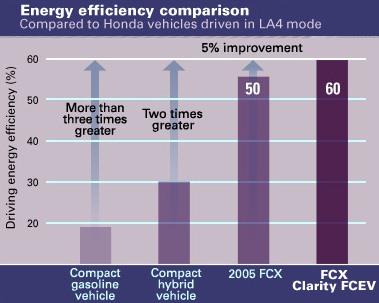Why Hydrogen Cars Are Suddenly Back in Vogue
7/2/2013 04:2
MADISON, Wis. — GM and Honda announced today (July 2) that they will join forces to develop a common hydrogen powertrain -- fuel cells and hydrogen tanks -- for fuel cell vehicles. Their goal is to get those new fuel cell cars ready by 2020.
Unlike electric vehicles (EVs) which use electric power stored in large lithium-ion packs, hydrogen cars use the electricity source generated by fuel cells in the electro-chemical reaction of hydrogen and air. A fuel-cell car's only tailpipe emission is water vapor.
Despite this technology's obvious advantages over EVs (better range, faster fueling time), the automotive industry has a history of on-again off-again love affairs with fuel cells. Car manufacturers and market analysts tend to blame the slow progress of fuel cell car development on the absence of a network of hydrogen refueling stations, each estimated to cost $1 million to $2 million.
But setting the infrastructure issue aside, why suddenly are we seeing a flurry of renewed hydrogen activity?
Two words: government regulations.
In 2004, when the market research firm ABI Research made a radical downward revision in its forecast for fuel cell cars, the firm's then director of energy research, Atakan Ozbek, predicted that the industry would not begin real growth without clearer government commitments at both national and local levels.
The automotive companies today know that later this decade they must meet much stricter CO2 regulations set by governments in the United States, Europe, and Japan.
Along with the fuel-cell revival, hybrid, plug-in hybrid, and battery-powered vehicles are part of the push to meet the same regulations. Clearly, no company is putting all its eggs in one basket.

http://www.eetimes.com/document.asp?doc_id=1318801
Copyright © 2013 UBM Tech, All rights reserved